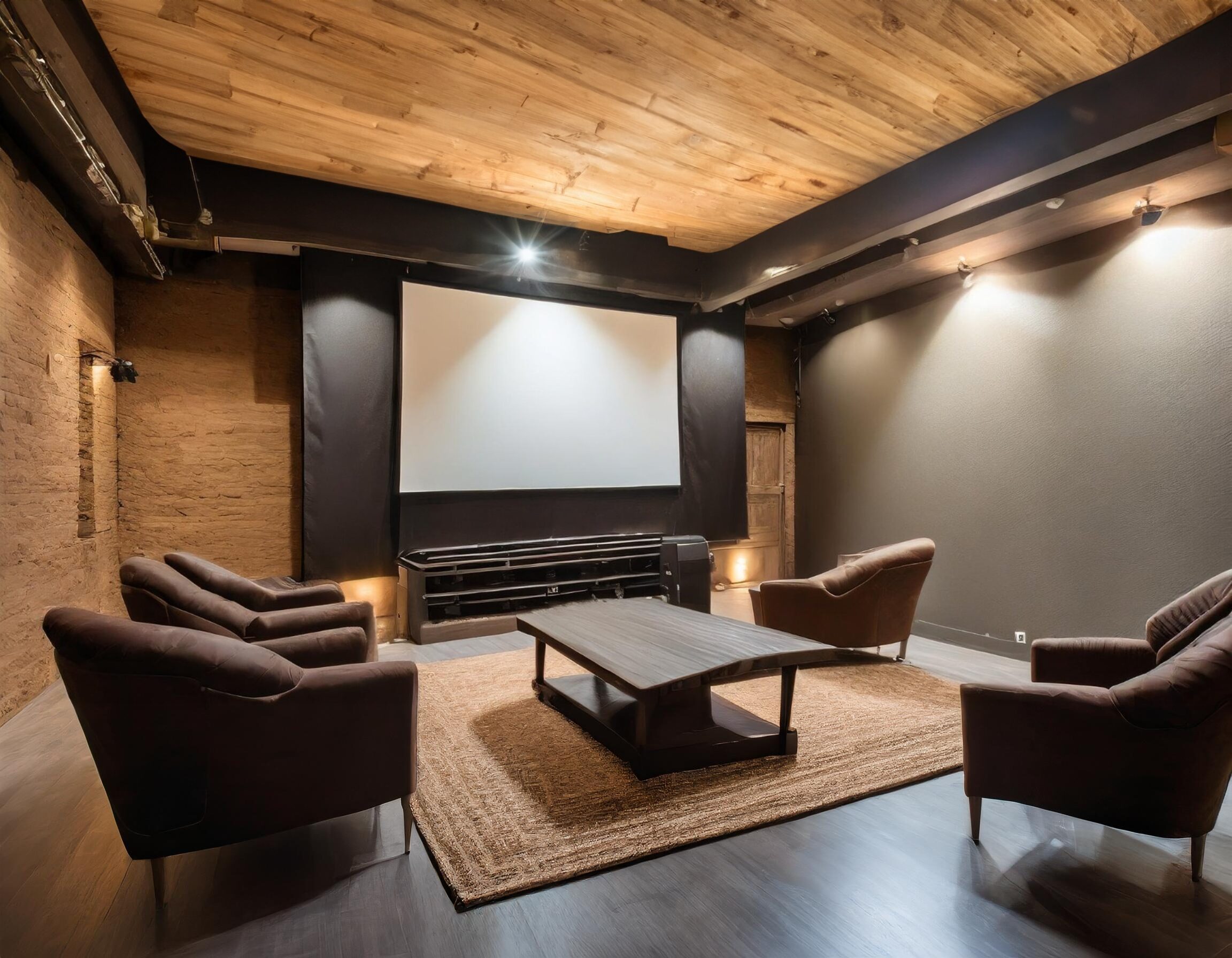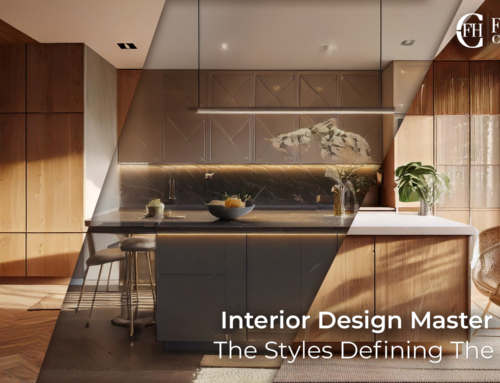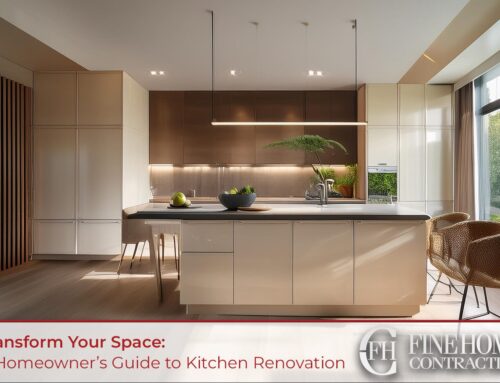Benefits and Returns on Home Theaters
Designing and installing a home theater can often feel like navigating a complex maze of decisions and technical challenges. Homeowners frequently grapple with issues such as selecting the right equipment to match their space, achieving optimal acoustics, dealing with the constraints of the room’s architecture, and ensuring the technology components all work seamlessly together. Moreover, the aesthetics of the theater must not only serve functional purposes but also reflect personal style, adding another layer of complexity. Balancing these aspects to create a cohesive and immersive experience is no small feat, making the process both daunting and exciting.
Enhanced Entertainment Experience
- Immersive Viewing: Enjoy cinema-quality visuals and sound in the comfort of your home, transforming how you experience movies, sports, and games.
- Personalized Space: Tailor every aspect of your home theater to your preferences, from the seating layout to the thematic design, creating a truly personal entertainment hub.
Increased Home Value
- Attractive Feature: A well-designed home theater can be a significant selling point, appealing to potential buyers and adding allure to your property.
- Market Differentiator: Homes with unique features like a high-end home theater often stand out in the real estate market, potentially leading to quicker sales and better offers.
Cost Savings and Convenience
- Movie Nights In: Save on cinema tickets, concessions, and travel expenses by bringing the movie-going experience home.
- Control and Flexibility: Watch what you want, when you want, without the constraints of movie showtimes or theater availability.
Social and Family Benefits
- Entertainment Hub: Your home theater can become a central gathering spot for friends and family, making it perfect for hosting movie nights, sporting events, and gaming tournaments.
- Shared Experiences: Create lasting memories with loved ones in a comfortable, controlled environment, enhancing your social and family life.
Designing Your Floorplan
The blueprint of your cinematic sanctuary starts with a thoughtful floorplan. It’s essential to consider the room’s dimensions, the position of doors and windows, and how sound will travel, ensuring optimal viewing and listening for all.

Optimal Seating Distance and Display Size
The relationship between seating distance and display size is critical in a home theater setup. The goal is to immerse viewers in the experience without causing strain or missing out on the crisp details of high-definition content.
- Standard Recommendation: A general guideline is the “1.5 to 2.5 times the screen size” rule for HDTVs. For example, if you have a 65-inch screen, your optimal seating distance should be between 97.5 inches (8.1 feet) and 162.5 inches (13.5 feet).
- 4K Ultra HD Consideration: With the advent of 4K Ultra HD displays, you can sit closer due to the higher resolution. The recommended distance is 1 to 1.5 times the screen diagonal, allowing viewers to appreciate the finer details without pixelation.
Adjusting for Display Size
When planning your home theater, the size of your display will significantly impact how you arrange your seating. For larger screens, you may need to increase the distance or consider tiered seating to ensure an unobstructed view for all guests. Conversely, smaller rooms might benefit from a moderately sized screen to maintain the optimal viewing distance without compromising comfort or visibility.
Selecting Seating
The seating in your home theater isn’t just about having a place to sit; it’s about merging supreme comfort with functionality, ensuring every moment spent is in pure relaxation.
Types of Seating
- Recliners with plush cushioning and armrests
- Sectional sofas for a more communal viewing experience
- Specialized home theater seating with features like built-in speakers and USB ports
Considerations for Comfort
- Ergonomic design for extended viewing
- Materials that blend with your design theme and offer durability

Selecting a TV or Projector
When selecting the perfect TV for your home theater, it’s essential to delve deeper into the features that will significantly impact your viewing experience. With advancements in technology, TVs today offer a plethora of features, but focusing on the key aspects can help you make an informed decision.

Resolution and Size
Resolution: The Clarity Factor
- 4K Ultra HD: Currently the standard for high-definition viewing, offering four times the resolution of standard 1080p HD. It provides sharper, more detailed images, making it ideal for medium to large home theaters.
- 8K Ultra HD: The next frontier in TV technology, with four times the resolution of 4K. While content is still catching up, an 8K TV is future-proof and delivers unparalleled detail, best appreciated in larger home theaters.
Screen Size: The Immersive Experience
- Proportional to Room: The size of the TV should complement the size of the room and the seating arrangement. A too-large TV in a small room can overwhelm the space and make viewing uncomfortable, while a small TV in a large room might not provide the immersive experience you’re seeking.
- Viewing Distance: Consider the recommended viewing distance for different resolutions. For 4K TVs, sitting closer is possible without noticing pixelation, enhancing the cinematic feel.
Technology and Features
OLED vs. QLED: The Display Technology Battle
- OLED (Organic Light-Emitting Diode): Each pixel produces its own light, allowing for true blacks and a high contrast ratio. OLED TVs offer excellent viewing angles and outstanding picture quality, making them a top choice for home theaters where cinematic quality is paramount.
- QLED (Quantum Dot LED TV): Utilizes a quantum dot layer that enhances brightness and color. While not capable of true blacks like OLED, QLED TVs are brighter, making them suitable for rooms with varying light conditions.
Other TV Features to Judge By:
- High Dynamic Range (HDR): Enhances the contrast and color of the picture, making whites brighter, blacks darker, and colors more vibrant. Look for TVs supporting HDR10, Dolby Vision, or HDR10+ for the best HDR experience.
- Higher Refresh Rates: A 120Hz refresh rate or higher is ideal for action-packed movies and sports, reducing motion blur and ensuring smooth movement on the screen.
- Smart Connectivity and Streaming: Ensure your TV supports the latest streaming platforms and has Wi-Fi and Ethernet connectivity for uninterrupted streaming.
- While external sound systems are typical in home theaters, don’t overlook the TV’s built-in sound quality. Look for models with decent built-in speakers, which can be useful for casual viewing or as a backup.
Top TV Picks for Home Theaters in 2024
Samsung QN900A Neo QLED 8K

- Resolution: 8K for unprecedented clarity and detail.
- Display Technology: Neo QLED combines Quantum Dot technology with a Mini LED backlight for deeper blacks and brilliant brightness.
- Smart Features: Tizen OS with a comprehensive app selection and smart home integration.
- Design: Ultra-slim profile with a nearly bezel-less Infinity Screen.
Sony A90J OLED

- Resolution: 4K with exceptional clarity and color accuracy.
- Display Technology: OLED for perfect blacks and vibrant colors, powered by Sony’s Cognitive XR processor.
- Smart Features: Google TV interface with voice control and access to streaming services.
- Design: Elegant and minimalist with a premium build quality.
LG G1 OLED evo

- Resolution: 4K with LG’s new OLED evo technology for better brightness and clarity.
- Display Technology: OLED evo offers an improved luminous efficiency for higher brightness and sharpness.
- Smart Features: webOS platform with ThinQ AI, voice recognition, and access to a wide array of content.
- Design: “Gallery” design meant to blend into your wall like a piece of art.
Other Considerations
While the visual and auditory components of a home theater are crucial, creating the ultimate cinema experience extends beyond just the technology. Here are additional features and considerations that can elevate your home theater from great to extraordinary.
Concessions: Snackbar and Wet Bar
- SnackBar: Incorporate a snackbar into your home theater to recreate the authentic movie-going experience. Stock it with your favorite candies, popcorn machine, and a mini-fridge for cold beverages.
- Wet Bar: For a more adult ambiance, a wet bar can add sophistication to your home theater. Equipped with a selection of spirits and a compact sink, it’s perfect for mixing cocktails or pouring a glass of wine during intermissions.
High-Speed Internet Router
- Streaming Quality: With the rise of streaming services as a primary source of content, a high-speed internet connection is essential. Ensure your router can handle high-definition and 4K streaming without buffering interruptions.
- Placement: Consider the placement of your router or invest in a Wi-Fi extender to ensure a strong signal in your home theater, especially if it’s located in a basement or a more secluded part of your house.
Acoustic Treatments
- Soundproofing: To prevent sound from escaping the room and to minimize external noise, soundproofing your home theater is key. This can be achieved through specialized insulation, acoustic panels, and solid doors.
- Acoustic Panels: Strategically placed acoustic panels can improve sound quality by absorbing excessive noise and reducing echo, making every seat the best seat in the house.
Comfort and Ambiance
- Lighting: Dimmable LED lighting or smart lights can create the perfect ambiance for your home theater, allowing you to adjust the lighting to match the mood of the movie.
- Climate Control: Ensuring your home theater is comfortably heated or cooled is essential for an enjoyable viewing experience. Consider a separate HVAC zone or high-quality air purifiers to maintain comfort throughout the year.
Themed Decor
- Personal Touch: Personalize your space with movie posters, memorabilia, or a theme that reflects your favorite film genre or era. This adds character and makes your home theater truly one-of-a-kind.
- Seating Style: Choose seating that not only provides comfort but also complements the overall theme and design of your home theater. Options range from classic cinema seats to plush recliners and cozy sofas.
Gaming Setup
- Versatility: For gaming enthusiasts, integrating a gaming console or PC into your home theater can turn it into a multipurpose entertainment hub. Ensure your setup includes low input lag projectors or TVs and comfortable gaming chairs for the best experience.
Incorporating these additional features into your home theater design can significantly enhance the overall experience, making your cinema space not just a place to watch movies, but a comprehensive entertainment destination that caters to all your leisure needs.
Further Reading + Inspiration
- AVS Forum: A community for audio-visual enthusiasts, offering discussions on home theater setups, equipment reviews, and DIY tips.
- CEDIA (Custom Electronic Design & Installation Association): Offers insights into professional home theater design, installation standards, and the latest in smart home technology.
- Sound & Vision Magazine: Features reviews of the latest AV equipment, from projectors and TVs to sound systems, along with expert advice on home theater design.








